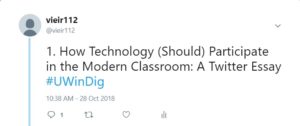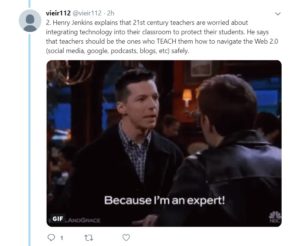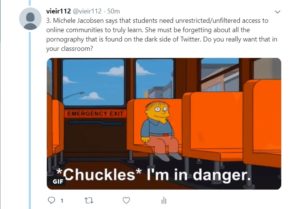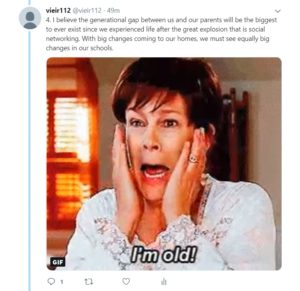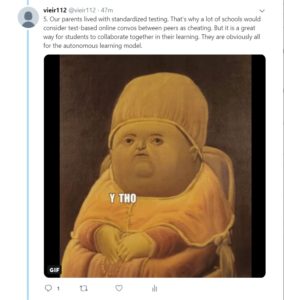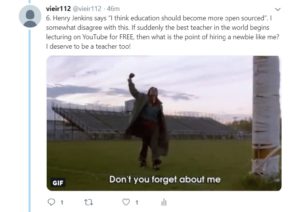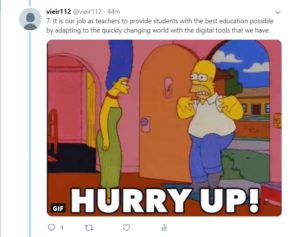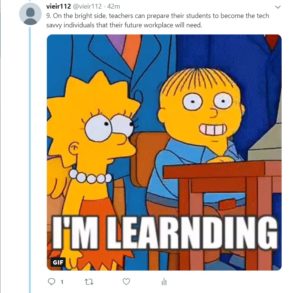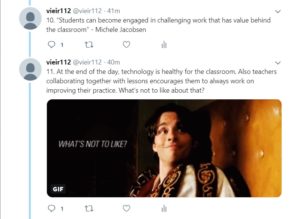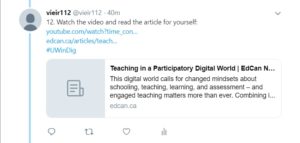Hello teachers!
For this media reflection, thanks to our open-minded professor Dr. Bonnie Stewart, Andrei Aitonean and I have been given permission to collaborate and make a podcast together as our multimedia reflection.
Now first let me apologize for the length of 16:45. Andrei and I were really enjoying pioneering this new medium of expressing our opinion.


The first thing I discussed with Andrei is my lack-of-understanding what this module is used for. The video with Terry in the beginning talked about how Terry wanted to improve his old-school teaching style. But Terry’s problem was never related to the process of applying the Technologist module. Because of this, I could not make the connection with my brain and I read the entire module unsure if it was designed for teachers, or students, or whomever.

This it might just be me, but too many hyperlinks on a web page cause me to lose sleep at night. Seriously. Here is my alternate suggestion that I mentioned on this episode of the podcast:

“Design Thinking” is just a synonym for “Backward Planning”. This is an excellent tool as we all know. By clicking on one of the hyperlinks, you are re-directed to a page that enlists 7 distinct ways how to backward plan. I was not aware there were different approaches to it. This was interesting to read.

The third step in the Design Thinking process was the “Ideate” step. This is where the teacher starts to brainstorm how to solve a problem that they understand and are aware of. I believe this to be the most crucial step because this is when change for the better begins.

This module seemed more like advice to solving a problem than an actual suggestion to solutions. It explains how teachers can understand technology to its full potential, but nowhere are there examples of projects that have worked for teachers, nor are there ideas for teachers to take the first step into solving a problem in their classroom. The definition of digital literacy is discussed in our podcast and I can’t help but to notice that there were no suggestions for how non-tech savvy teachers can improve their technological education. This module is a great tool for explaining to teachers what they need to change, but is not so great at explaining how they need to change.

